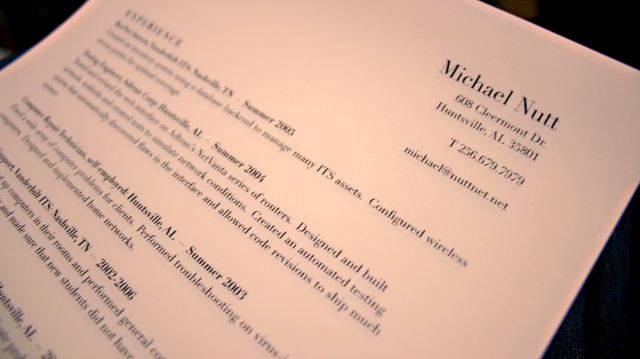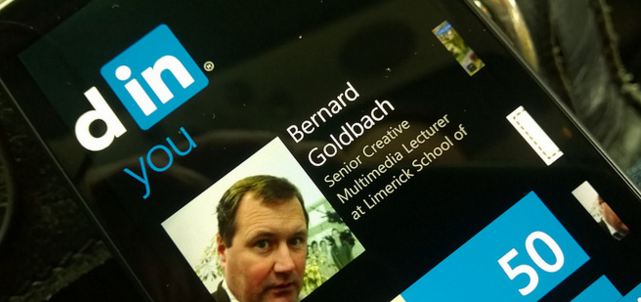Nine out of every ten large companies now use "robots" (Applicant Tracking Systems) to screen your resume. Knowing how to bypass their judgmental algorithms is becoming a necessary tool in your job-searching arsenal.
Recently, we gave you a pretty lengthy list of free, visually appealing resume templates. These resumes will work in your favor when a human being finally looks at them. But a stunning resume doesn't necessarily help you navigate the automated screening stage. For this, you need simplification, and keywords.
The following tips are known to be the best (and most acceptable) ways of bypassing the Applicant Tracking System's (ATS) beady eyes. If you know of any more, please leave them in the comments.
How It Works
Applicant Tracking Systems were first built to help recruiters organize resumes and do some basic screening to make the recruiters' job simpler. They have evolved from their beginnings.
Now, these systems are much more sophisticated. They are the reason why more than half of resumes are no longer looked at by human eyes. These systems are on the lookout for very specific words, years of experience, places of education, spelling mistakes, bad formatting, and much more. If you don't meet the criteria at this first stage, your resume ends up, automatically, in the trash can.
An employer will specify to the system what it is they are looking for (and avoiding) in a candidate, and how important each of those qualities is. The system is then able to rank applicants based on if, where, and how these attributes were mentioned in a resume.
If an applicant doesn't take this reality into account, despite being perfectly qualified for a job, they could see their resume being rejected without ever being properly considered.
Simplify Your Resume
To start then, understand that these robots are looking for very specific things. It's your job to help them find those things by simplistically recrafting your resume. If you're using excessive formatting such as tables or images, remove them. If you're trying to stand out by using alternative title headers, stick with the standard headers (Education, Qualifications, Experience, etc.).
Often, your resume will be scanned, then certain words will be picked out of the image that's created. Do everything you can to keep that resume simple.
This means removing any unnecessary shading, and keeping to simple, sans-serif fonts such as Tahoma or Verdana. Even typical serif fonts such as Times New Roman can be too fancy for some ATMs.
Send as a Word File
When it comes to attaching your resume to your application, you may be used to sending PDFs. When you send a PDF, you know it's going to display properly for the recipient. But some ATSs find reading .doc or .docx files (usually from Microsoft Word) to be easier to screen. It's therefore safer for you to simply create your resume in Word, and save in a standard Word format. Ditch the PDF.
Use Bullet Points
Instead of showing off your literary skills by writing full paragraphs wherever possible, use concise bullet points. This helps the reader, whether a robot or a human, to scan the text more easily.
Keeping bullet points concise means you also avoid any unnecessarily flowery language. This has the added benefit of lowering your resume's word count, thereby increasing the density of keywords throughout the document. More on this later.
Format Your Experience
Apparently, most ATSs find it easier to understand your work experience if that experience is written in a precise way. Many people will write the date of employment just before the name of the employer, as this looks neat on the page.
Rather, write the name of your employer first, followed by your title, then dates. This makes it easier for the ATS to follow and to calculate your years of experience (though you should still state this plainly toward the start of your resume).
Include Your Address
A surprising number of ATSs will ignore your resume if no address is included. Not only may they be looking for a candidate who lives within a certain radius, they may also need to contact you via post. So don't forget to include this piece of information.
Wherever you place it though, don't place it in the header or footer of the document. These can be ignored when screening is taking place.
Proofread
An ATS will disregard your resume straight away if any spelling mistakes are detected. Sometimes this is because the employer has chosen to have resumes with mistakes rejected. Sometimes it's because the ATS doesn't know what you mean.
As an example, if the ATS is looking for the specific keyword "Photoshop", and you accidentally type "Photshop", you haven't given the actual keyword desired, and could therefore be rejected.
Read the Description Carefully
Within the job description will be many clues as to what words you should be including in your resume. If the job description mentions six different programming languages a candidate should should have, do your best to include each of these in your resume.
Even if you aren't yet proficient in a couple of those languages, you can still mention them in a later resume section. Perhaps you could imply that you're "registering for an online course in Python". In which case, even though you don't write Python yet, the keyword is still in your resume.
The same is true for personal attributes. If a job description requests someone with a "keen eye for detail", and you've written "attention to detail" in your resume, change it. Mimic the language you find both in the job description and the company website.
Using an online tool like Wordle can help display those keywords in a visual form.
LinkedIn Stalking
Before submitting your resume, search LinkedIn for people who have a similar job that you're applying for at that company. Take a look at the language they use to describe their role. Look at the skills and qualifications they have, and the software they use.
These people are already employed at your target company, so they have the right skillset. Use this as an opportunity to mimic their style.
Keyword Placing
Just like with Search Engine Optimization (SEO), the placing and density of your keywords plays an important role in how you "score". If the most important keywords aren't mentioned until the end of your resume, they may be given less weight.
This is why it's becoming more common to remove the vague "Objectives" section at the start of the resume. This is now replaced with an "Overview" section. This overview is just a few sentences long, offering the perfect opportunity for you to quickly insert the major keywords that you've identified. You can then repeat these further in the resume, giving them extra weight in the ATS.
Keyword Density
We've talked a lot about inserting keywords in your resume, but don't overdo it. Some people go too far, and start to insert blocks of tiny, white text containing nothing but a long list of invisible keywords. This is ridiculous. So is stuffing your resume with so many keywords that it's barely readable.
Make sure you include the relevant words. Mimic the language that the company uses, and you'll stand a good chance. Don't go making yourself look too desperate.
Your Schools
For some positions, if certain educational institutions (such as an Ivy League school) are not mentioned in your resume, you will not be considered a worthy candidate.
If you've never been to such a school, don't worry. Many of these schools offer online courses (some of which are free). In your section on Education then, you could write that you're expanding your qualifications by studying a course in Computer Science at Yale. This not only improves your education, but gives you the chance to insert the name of a renowned institution into your resume.
Getting Past the Machine
If sending your resume is the only way you have of landing the job, follow these tips. If you're able to bypass the "machine" though, by all means go ahead. This could mean approaching people on LinkedIn, via email, or at networking events.
For most, however, the resume is still something they will need to submit. In these cases, make sure you've tailored that resume to the specific employer. This is far more likely to get you past the screening process than sending another generic document.
This all boils down to keeping things simple, while finding and including the main keywords for that position.
What other tips do you have for getting past the "robots", the automated gatekeepers, the Applicant Tracking Systems: whatever you want to call them?
Image Credits: Robot hand by saginbay via Shutterstock, 2006-02-14 005 by Michael Nuff (Flickr), Drafting bySebastien Wiertz (Fickr), LinkedIn Lumia by Irish Typepad (Flickr), Graduation by Joe Shlabotnik (Flickr).






